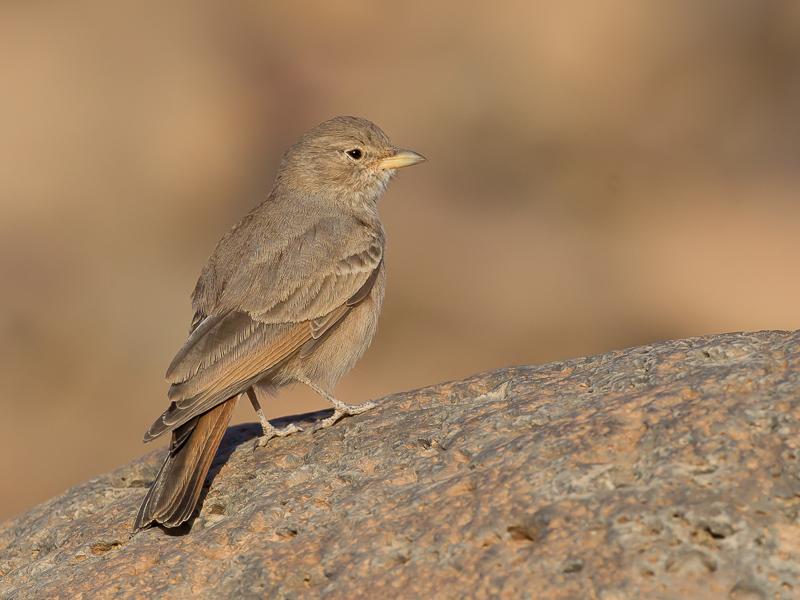Desert lark
(Ammomanes deserti)

Description
The desert lark (Ammomanes deserti) breeds in deserts and semi-deserts from Morocco to western India.It has a very wide distribution and faces no obvious threats,and surveys have shown that it is slowly increasing in numbers as it expands its range.The International Union for Conservation of Nature has rated its conservation status as being of "least concern".The desert lark is a medium-sized,big-headed and long-billed lark,growing to a length of 16 to 17 cm (6.3 to 6.7 in).The sexes are alike,but there is considerable geographical variation.It has a rather dull plumage which can vary from quite pale to rather dark.Plumage may vary between subspecies but individuals within populations can be variable too.It is similar in appearance to the bar-tailed lark but is slightly larger,has a less-domed head,a larger broader beak,stouter legs and a longer tail.The upper parts of the many subspecies vary in colour;most are pale greyish brown,but some races are very washed out and others are quite a deep colour.Some have some rufous colour on wings and tail,similar to the bar-tailed lark,but the underparts are a pale pinkish grey and have much more streaking than that species,and the desert lark lacks the clearly defined terminal black band on the tail of that species,although it may have a rather diffuse dark patch.The colour variation seems to mainly match the habitat,so sandy-coloured birds are commoner in sandy areas,greyer birds in rocky areas and the darkest birds in desert dominated by basalt.The song is a mournful choo-wee-chacha wooee,uttered from the ground or a boulder,or during undulating flight.It is more mellow and less squeaky than that of the bar-tailed lark.When flushed it utters a short churree or chee-lu.
Taxonomic tree:







